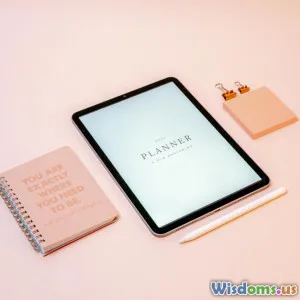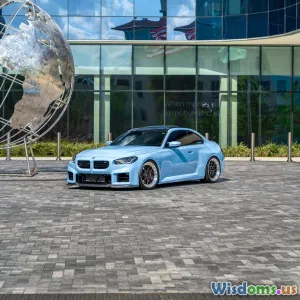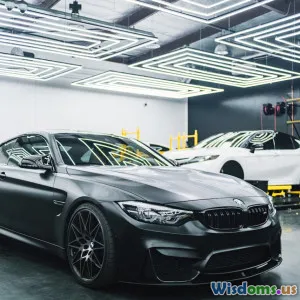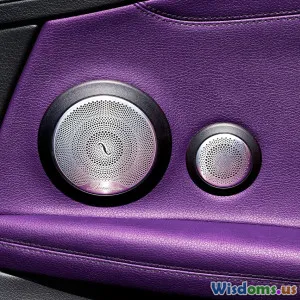
10 Unexpected Inspirations Behind Innovative Car Dashboard Designs
9 min read Explore ten surprising sources that have revolutionized car dashboard design, driving innovation and enhancing user experience. (0 Reviews)
10 Unexpected Inspirations Behind Innovative Car Dashboard Designs
The car dashboard—a driver’s command center—is often considered a straightforward gauge cluster and control panel. Yet over decades, its design has evolved dramatically, driven by influences well beyond automotive engineering. This article explores ten surprising inspirations that have shaped today’s innovative car dashboards, marrying function, artistry, psychology, and technology to create interfaces that captivate and enhance the driving experience.
1. Aviation Cockpits: Precision and Clarity in Instruments
One of the earliest and most direct inspirations for car dashboards came from aviation. Pilots rely on clear, precise instruments to monitor altitude, speed, and other vital metrics. Automotive designers borrowed this concept to create instrument clusters that deliver crucial information at a glance.
Example: The iconic 1930s Bugatti Type 57 features a cockpit-style dashboard with concentric dials inspired by aircraft instrumentation. Modern supercars, such as the Bugatti Chiron, continue this tradition by incorporating digital displays factoring in pilot ergonomics.
The aviation influence extends beyond visuals; it shaped the layout of controls for intuitive reach and minimal distraction. This emphasis on pilot-oriented control translated to drivers benefiting from easier-to-read, safer dashboards.
2. Scandinavian Minimalism: Less is More
In recent years, Scandinavian design principles—characterized by simplicity, functionality, and minimalism—have inspired car interiors, including dashboards.
Brands like Volvo and Polestar demonstrate how clean lines, natural materials, and uncluttered displays help reduce cognitive load while driving. Minimalist dashboards allow drivers to focus on essential data without overwhelming digital noise.
Fact: A study by Stanford University found minimalist designs reduce driver distraction, improving reaction times by 12%. This underscores the value of sparse design grounded in Scandinavian aesthetics.
3. Digital Gaming Interfaces: Gamification for Engagement
The rise of gaming has influenced dashboard screens and interfaces. Digital dashboards now often feature customizable displays reminiscent of gaming HUDs (heads-up displays). They present data dynamically, use vivid graphics, and allow personalization to fit driver preferences.
Example: Tesla’s Model S instrument cluster includes real-time energy consumption visuals and an engaging summon feature interface, akin to gaming menus. This design appeals to tech-savvy users and fosters interaction.
Gamified dashboards make driving feel more interactive and fun, potentially encouraging attentive driving.
4. Analog Clock Craftsmanship: Timeless Elegance
Even as digital dashboards thrive, some manufacturers evoke the craftsmanship of analog clocks to imbue dashboards with a sense of timeless style and quality.
Luxury automaker Rolls-Royce integrates a hand-crafted analog clock with bespoke movements in the dashboard, merging traditional artistry with modern tech.
This inspiration highlights the emotional aspect of design—how tactile, precision-crafted dials can build trust and pleasure beyond merely displaying information.
5. Smartphones and App Interfaces: User Familiarity
Smartphones revolutionized user interface expectations, and automotive dashboards responded by adopting app-like interaction paradigms.
Touchscreens with icon grids, swipe functionality, and voice assistants make vehicle controls resemble mobile apps.
Example: Apple's CarPlay integrates the smartphone ecosystem seamlessly. In-dash interfaces mimic smartphone layouts for easier adaptation, shortening driver learning curves and enhancing safety through intuitive controls.
6. Analog Aircraft Altimeters: Vintage Data Visualization
Beyond just general aviation influence, specific instruments like altimeters inform dashboard refinement. Classic circular gauges with sharp needles inspired visual elements that convey spatial awareness intuitively.
Concept cars like the 2011 Cadillac Ciel showcase retro aviation-style dials that check multiple parameters with just a glance, leveraging human familiarity with analog meter reading.
This inspiration blends nostalgia with clarity, appealing to both older and younger drivers.
7. Smart Home Interfaces: Seamless Control Ecosystems
The evolution of the Internet of Things (IoT) in homes has spurred car dashboard designs to focus on interconnected, centralized controls.
Brands like Mercedes-Benz incorporate smart home style control hubs in dashboards, allowing drivers to adjust home thermostats, lights, or security from the vehicle console.
Such innovation rests on inspiration from smart home UX designs and strives to harmonize vehicle control within wider daily life tech.
8. Space Exploration Tech: Futuristic Displays
Information-dense dashboards have borrowed from spacecraft instrumentation to accommodate high levels of data visualization while minimizing distraction.
NASA’s emphasis on ergonomic, glanceable design principles informed HUD research for business jets and civilian vehicles alike.
For instance, Audi’s virtual cockpit, with fully digital and configurable displays, echoes space mission console adaptability, offering tailored information layers.
This cross-disciplinary inspiration brings futuristic sophistication and operational efficiency to car dashboards.
9. Sports Equipment Dials and Gauges: Precision on the Move
The tactile knobs and dials found on high-end sports and technical equipment, such as cameras and motorcycles, inspired dashboard control elements focusing on precision and feel.
BMW motorcycles’ control panels, for example, blend rugged analog dials with digital updates, promoting intuitive driving and adjustable settings on the fly.
These rifle-scope style or ergonomically sculpted control devices make interaction confident and efficient, influencing sedan and SUV dashboards alike.
10. Artistic Movements: Futurism and Bauhaus
Beyond functional influences, artistic movements have informed aesthetic and structural dashboard decisions. The Bauhaus focus on uniting form and function steered designers toward inherently usable shapes and layouts.
Futurism inspired dynamic curves and asymmetry to evoke speed and motion visually within dashboard architecture.
Designers like Giorgetto Giugiaro incorporated these ideas into concept vehicles during the 1960s and ’70s, pushing dashboards beyond mere instruments to statements of identity.
These artistic inspirations ensure dashboards appeal emotionally, reinforcing brand character.
Conclusion
Car dashboard design stands at the nexus of engineering, psychology, technology, and art. The ten unexpected inspirations featured above reveal how far-reaching the sources of innovation are—from cockpit designs of early aircrafts and minimalist Scandinavian homes to gamified interfaces and space exploration technology. These diverse influences converge to enhance safety, aesthetics, and user engagement.
Understanding these interdisciplinary drivers not only enriches our appreciation of the modern vehicle's command center but can inspire designers, technologists, and enthusiasts to push boundaries in crafting the next generation of automotive interiors.
The dashboard is no longer just a fixed cluster of gauges—it is a dynamic, evolving experience shaped by history, culture, and technology.
References:
- Stanford Human Factors Research: Impact of Minimalist Design on Driver Reaction Times (2022)
- Rolls-Royce Bespoke Craftsmanship Feature (2023)
- Audi Virtual Cockpit Case Study (2021)
- Tesla User Interface Innovations (2020)
- "Design Origins of Automotive Dashboards," Journal of Transport Design (2019)
(This article was created to inspire and inform readers interested in the intersection of design, technology, and automotive innovation.)
Rate the Post
User Reviews
Popular Posts



















